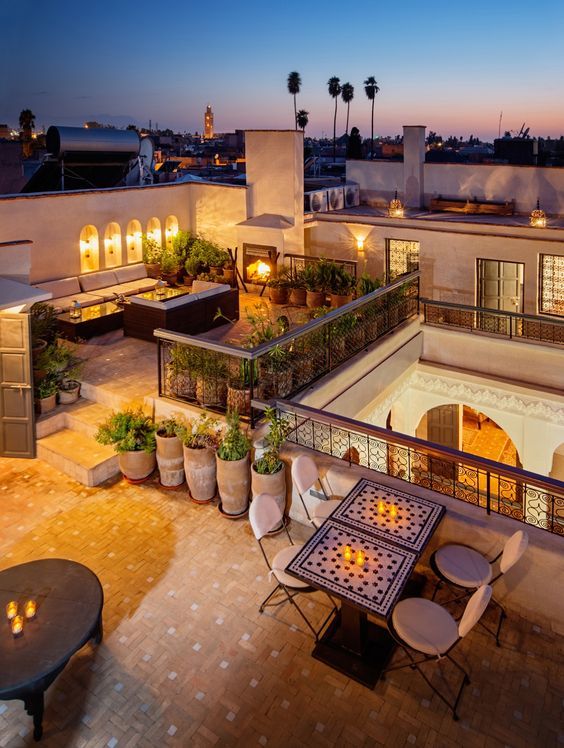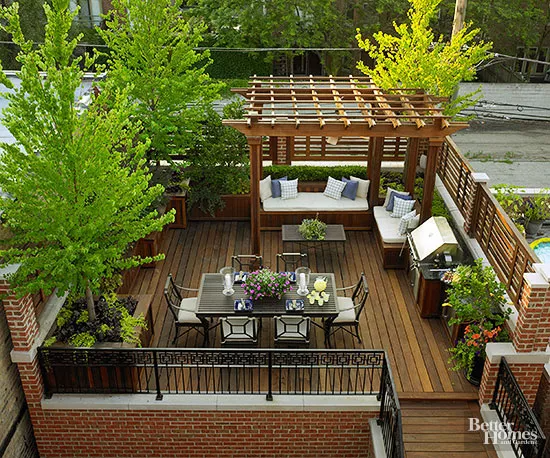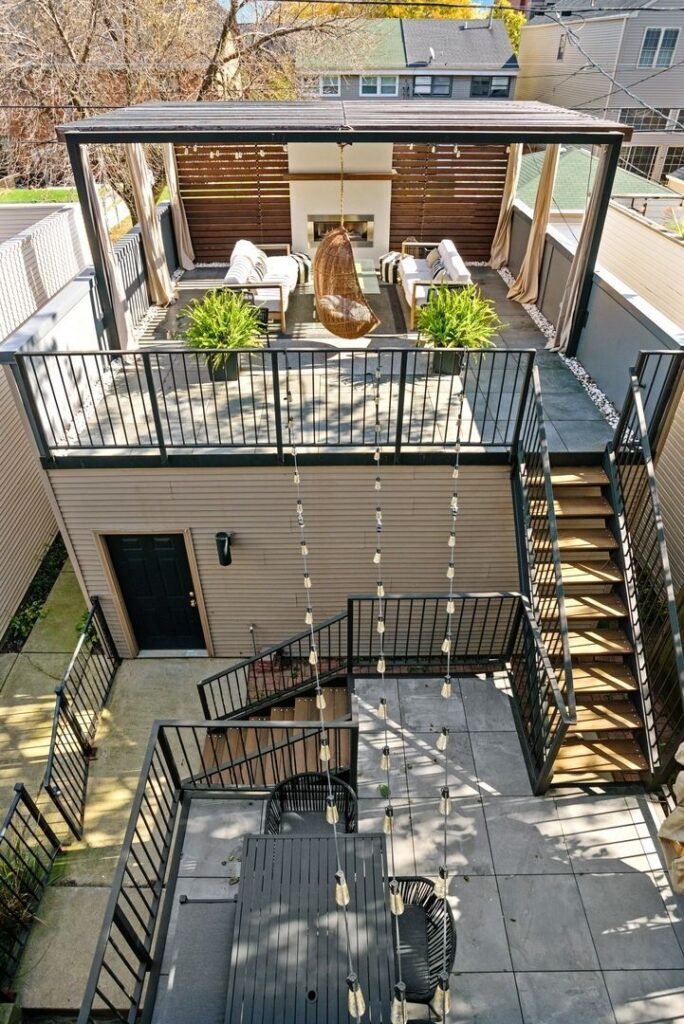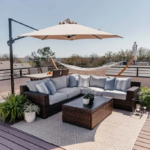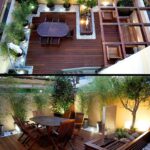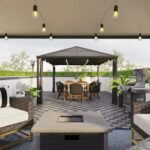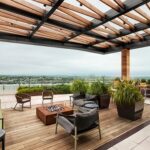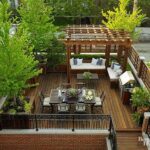Rooftop patios have become increasingly popular in urban settings as an extension of outdoor living spaces in high-rise buildings. Designing a rooftop patio requires thoughtful planning and creativity to maximize the use of limited space and create a functional and visually appealing oasis in the sky.
One key consideration in rooftop patio design is the layout and arrangement of furniture and amenities. Since rooftop patios are typically smaller in size compared to ground-level outdoor spaces, it’s important to choose furniture that is both stylish and space-saving. Opt for modular or foldable furniture pieces that can be easily rearranged or stored when not in use, and consider adding built-in seating or benches to maximize seating capacity without taking up valuable square footage.
Another important aspect of rooftop patio design is the selection of plants and greenery. Incorporating planters, vertical gardens, or hanging plants can help soften the hard lines of a rooftop space and create a lush and inviting atmosphere. Choose a mix of low-maintenance plants that can thrive in a rooftop environment, such as succulents, herbs, or ornamental grasses, to add color and texture to the space.
Lighting is also crucial in rooftop patio design to create a cozy and inviting ambiance after the sun goes down. Install ambient lighting fixtures, such as string lights, lanterns, or sconces, to illuminate the space and create a warm and welcoming glow. Consider adding a fire pit, outdoor fireplace, or heat lamps to extend the usability of the patio during cooler months and create a focal point for gathering and relaxation.
Incorporating outdoor elements, such as water features or a small garden, can also enhance the visual appeal of a rooftop patio and create a sense of tranquility and relaxation. Consider adding a small fountain, pond, or mini waterfall to create a soothing sound and add a touch of luxury to the space. Alternatively, create a small herb or vegetable garden to grow fresh produce and flowers while adding a touch of greenery to the patio.
Finally, consider the views and surroundings of the rooftop patio when designing the space. Take advantage of any scenic views or cityscape by strategically placing seating areas or focal points to maximize the visual impact. Create privacy screens, pergolas, or trellises to define the space and provide shade and shelter from the elements, while still allowing for plenty of natural light and airflow. With careful planning and attention to detail, a rooftop patio can be transformed into a stylish and functional outdoor retreat that offers a welcome escape from urban life.
